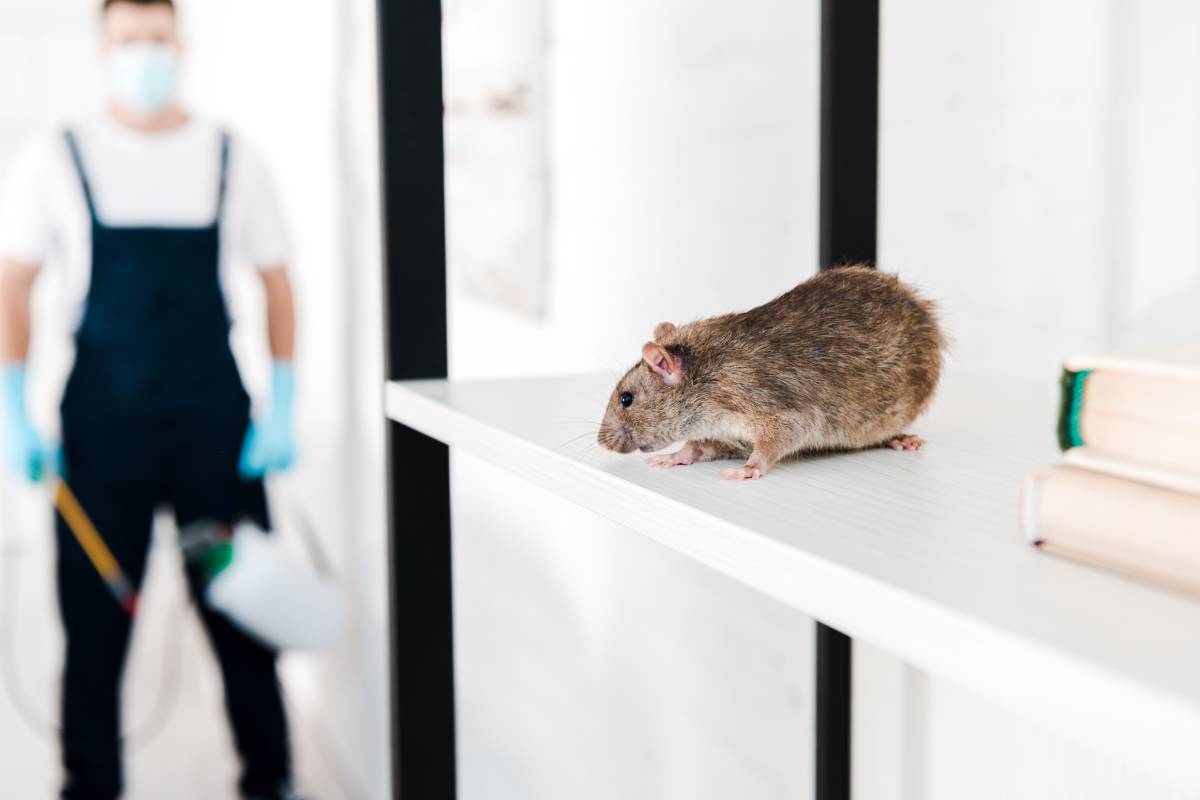Rodents aren’t just pesky critters; they’re health hazards and can wreak havoc on your property. In Australia, a hotspot for diverse rodent species, it’s critical for both homeowners and businesses to implement effective rodent control strategies. Knowing the ins and outs of rodent proofing and extermination, including the costs involved, is key to making smart choices to safeguard your property and the well-being of your family or employees.
This article will dive into the nitty-gritty of rodent proofing and extermination, highlighting why they’re important, the methods used, and what you might expect to pay for a rodent exterminator. With this knowledge, you’ll be better prepared to handle rodent problems and keep your space rodent-free.
What is Rodent Proofing?
Rodent proofing is the process of making buildings or structures less accessible to rodents like mice and rats. These pesky critters can cause all sorts of problems, from spreading diseases to damaging property. Rodent proofing aims to keep them out, preventing infestations and the troubles they bring.
Why is Rodent Proofing Important?
Rodents are not just annoying; they’re also carriers of diseases like salmonella, hantavirus, and even bubonic plague. They can contaminate food, chew through wires, and cause structural damage to buildings. By rodent proofing, you’re not only protecting your property but also safeguarding your health.
How Does Rodent Proofing Work?
- Sealing Entry Points: Rodents can squeeze through tiny openings, so the first step is to seal any gaps or cracks in walls, floors, and foundations. This might involve using materials like wire mesh, steel wool, or caulk to block their entry.
- Keeping Food Sources Secure: Rodents are attracted to food, so keeping your kitchen tidy and storing food in airtight containers can discourage them from sticking around.
- Eliminating Hiding Places: Cluttered spaces provide rodents with hiding spots. Getting rid of spaces in your ceiling and wall can help you mitigate the rodent infestation.
- Trimming Vegetation: Rodents often use overgrown vegetation as a pathway to your home. Keeping Norfolk Pines trimmed away from your building can help prevent them from gaining easy access.
- Using Traps and Baits: In addition to preventative measures, traps and baits can be used to catch rodents already present. This should be done carefully, especially if there are pets or small children around.

Common Rodent Proofing Techniques:
- Installing Door Sweeps: These seal the gap between the bottom of doors and the floor, preventing rodents from sneaking in underneath.
- Screening Vents and Chimneys: Covering vents and chimneys with screens or mesh prevents rodents from entering through these openings.
- Capping Chimneys: Chimneys are like open invitations for rodents. Installing caps on chimney openings keeps them out.
- Elevating Storage: Keeping storage items off the floor, especially in basements and garages, makes it harder for rodents to hide and nest.
Benefits of Rodent Proofing:
- Health Protection: By keeping rodents out, you reduce the risk of diseases they carry.
- Property Preservation: Rodents can cause significant damage to buildings, which can be expensive to repair.
- Peace of Mind: Knowing your home or building is protected from these pests can provide peace of mind.
Is Rodent Proofing Permanent?
Rodent proofing is not necessarily permanent, as it may require ongoing maintenance and vigilance to ensure its effectiveness. While rodent-proofing measures can significantly reduce the likelihood of infestation, rodents are persistent creatures and may find new ways to enter your property over time. Here’s why rodent proofing may not be permanent:
Changes in Structure
- Wear and Tear: Over time, the materials used for rodent proofing, such as caulk or wire mesh, may degrade or become damaged, creating new entry points for rodents.
- Settling: Buildings can settle and shift, causing gaps and cracks to form, which might allow rodents to re-enter.
Rodent Adaptability
- Smart Rodents: Rodents are resourceful and may learn to overcome barriers or find new entry points, especially if they are highly motivated by food or shelter.
- Population Dynamics: Rodent populations can fluctuate, and new individuals may seek entry into your property if conditions are favourable.
Environmental Factors
- Vegetation Growth: Trees and shrubs near your property can grow, providing new pathways for rodents to access your building.
- Weather Conditions: Extreme weather events like heavy rain or wind can damage rodent-proofing materials or create new openings.
Human Factors
- Neglect: If property owners neglect maintenance or fail to address new potential entry points, rodents may exploit these vulnerabilities.
- Behavioural Changes: Changes in human behaviour, such as leaving out food or clutter, can attract rodents and undermine previous rodent-proofing efforts.
Regular Maintenance
To maintain the effectiveness of rodent proofing, regular inspections and maintenance are crucial. This includes:
- Sealing Gaps: Periodically check for new gaps or cracks and seal them promptly.
- Keeping Areas Clean: Ensure that food sources are properly stored and that clutter is minimized to discourage rodent activity.
- Updating Measures: If you notice rodents gaining access despite previous efforts, consider updating or reinforcing your rodent-proofing techniques.

What is Rodent Extermination?
Rodent extermination is the process of eliminating rodents, such as mice and rats, from a specific area, such as a home, building, or outdoor space. It involves various methods aimed at eradicating existing rodent populations and preventing their return. Rodent extermination is essential for protecting property, preventing damage, and reducing health risks associated with rodent infestations.
Why is Rodent Extermination Important?
Rodents can pose significant health risks and cause extensive damage to property. They carry diseases, contaminate food, gnaw on wires, and damage structures, posing risks to human health and safety. Therefore, prompt and effective rodent extermination is crucial to mitigate these risks and maintain a safe and healthy environment.
How Does Rodent Extermination Work?
- Inspection: The first step in rodent extermination is to identify the extent of the infestation and locate entry points and nesting areas. Trained professionals or homeowners may conduct thorough inspections to assess the situation.
- Treatment Plan: Based on the inspection findings, a treatment plan is developed to address the infestation. This plan may include various methods and techniques tailored to the specific circumstances.
- Trapping: Traps are commonly used to capture and kill rodents. Different types of traps, such as snap traps, glue traps, and live traps, may be employed depending on the situation and preferences.
- Poison Baits: Rodenticides or poison baits are used to kill rodents. These baits may be placed strategically in areas frequented by rodents, but caution must be exercised to prevent harm to non-target animals and humans.
- Sealing Entry Points: To prevent future infestations, entry points and potential access routes for rodents are sealed off. This may involve repairing cracks in walls, installing screens over vents, or closing gaps around pipes.
- Sanitation: Cleaning and removing sources of food and water are essential to discourage rodent activity. Proper sanitation helps make the environment less attractive to rodents.
Common Rodent Extermination Techniques:
- Snap Traps: These traps quickly snap shut when triggered, killing the rodent instantly.
- Glue Traps: Rodents become stuck to the adhesive surface of these traps, making them unable to escape.
- Rodenticides: Poison baits that rodents consume, leading to death. These should be used with caution and according to instructions to minimize risks to non-target species.
- Professional Services: Pest control professionals may use a combination of methods tailored to the specific infestation, including trapping, baiting, and exclusion techniques.
Benefits of Rodent Extermination:
- Health Protection: Eliminating rodents reduces the risk of diseases they carry, such as salmonella, hantavirus, and leptospirosis.
- Property Preservation: Preventing damage to structures, insulation, and wiring saves homeowners and businesses from costly repairs.
- Peace of Mind: Knowing that the property is free from rodents provides peace of mind and ensures a safer living or working environment.

How much does rodent extermination cost in Australia?
A rodent exterminator in Australia can cost vary depending on several factors, including the extent of the infestation, the size of the property, the type of treatment required, and the location of the service provider. On average, however, the cost typically ranges from $150 to $300 for a standard residential treatment.
Factors Affecting Cost:
- Severity of Infestation: The more severe the infestation, the more extensive the treatment is needed, which can increase the cost.
- Type of Property: Larger properties or commercial buildings may require more extensive treatment, leading to higher costs compared to smaller residential properties.
- Type of Treatment: Different treatments, such as traps, baits, or professional services, have varying costs associated with them.
- Location: Prices may vary based on the region or city due to differences in demand, labour costs, and overhead expenses.
Average Costs for Different Treatments:
- DIY Traps and Baits: If you choose to handle the problem yourself, purchasing traps or baits from a hardware store can cost anywhere from $10 to $50, depending on the type and quantity.
- Professional Services: Hiring a professional pest control service typically ranges from $150 to $300 for a standard residential treatment. This may include inspection, treatment, and follow-up visits if necessary.
Additional Costs:
- Follow-up Treatments: If the infestation is severe or persistent, additional treatments may be required, which could increase the overall cost.
- Preventative Measures: Some pest control companies offer ongoing maintenance plans or preventative treatments to keep rodents at bay, which may incur additional costs.
- Structural Repairs: If rodents have caused damage to your property, such as gnawing on wires or insulation, repairs may be necessary, adding to the overall expense.
Tips for Cost-Effective Extermination:
- Early Intervention: Addressing the problem early can help prevent it from escalating, potentially saving on treatment costs.
- Comparison Shopping: Get quotes from multiple pest control companies to compare prices and services offered.
- Preventative Measures: Invest in rodent-proofing measures to reduce the likelihood of future infestations, potentially saving on future extermination costs.
- Regular Maintenance: Keep your property clean and well-maintained to discourage rodent activity and minimize the need for professional extermination.
Conclusion
To wrap it up, keeping rodents at bay is a key part of looking after your property, especially in Australia’s unique setting. Effective rodent-proofing actions, like blocking their way in and keeping the place tidy, can really cut down the chance of these critters moving in and causing health or property issues.
Also, if rodents do show up, it’s handy to know the different ways to get rid of them and what it might cost. Deciding between a do-it-yourself approach or calling in the pros, it’s important to tackle the problem fast to keep the risks low and make sure your space is safe and sound.
In the end, staying ahead of rodent problems means homeowners and businesses can rest easy, knowing their spots are safeguarded from these unwelcome visitors.

